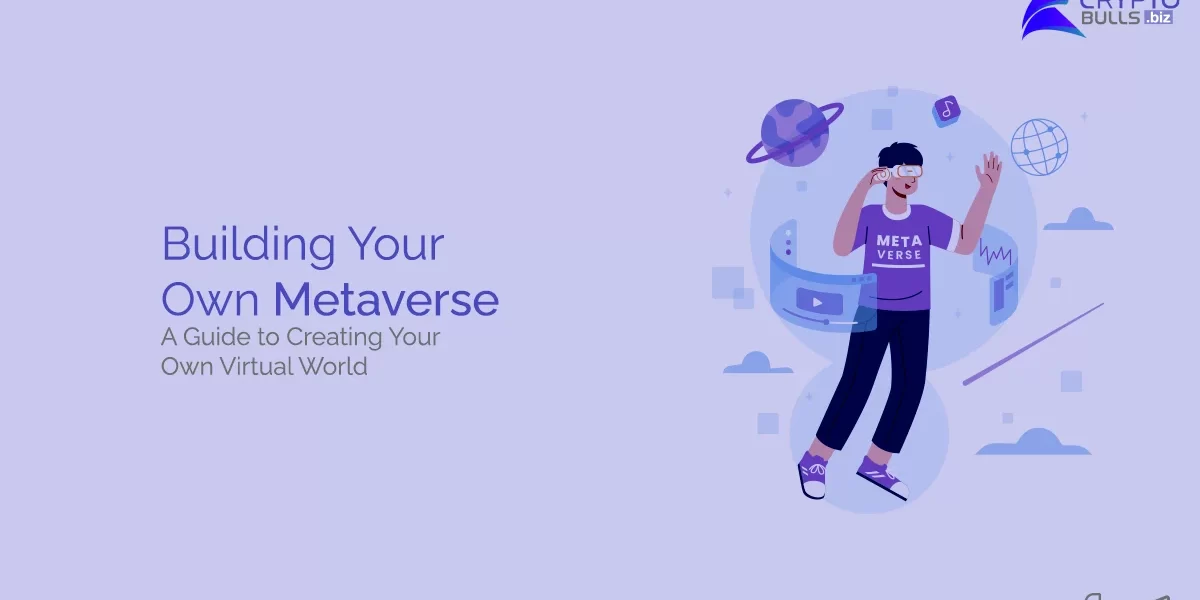Crafting Your Virtual World: A Comprehensive Metaverse Guide
The metaverse, a virtual universe where users seamlessly interact with each other and digital entities, is a burgeoning technology with boundless potential to reshape our lifestyles, work routines, and leisure activities. In this blog, we explore the fundamentals of constructing a metaverse, encompassing its definition, motivations for embarking on such a venture, and the intricacies of its technical underpinnings. Along the way, we’ll pose pivotal questions to steer your contemplation towards a well-defined metaverse vision.
Understanding the Metaverse
The metaverse is like a massively multiplayer online game (MMO), but it’s more than just a game. Users have complete control over this world and can do anything they want, from exploring unknown areas to buying and selling virtual goods.
The idea of a fully developed metaverse is still changing. Still, there are already many examples of them, or more are being made. Here are some types of metaverse models:
Social Metaverse
These metaverses concentrate on fostering social bonds among users. Avatars come to life in a virtual domain mirroring real-world social settings. Examples include Second Life and VRChat.
Gaming Metaverse
Designed for immersive gaming experiences, gaming metaverses orbit around specific titles, enabling players to interact in a shared virtual expanse. Roblox and Minecraft exemplify this category.
Educational Metaverse
Tailored for learning and edification, educational metaverses often serve as virtual classrooms or platforms for professional training simulations. Engage and NeosVR are notable instances.
Commercial Metaverse
Geared towards commerce, these metaverses facilitate e-commerce, marketing, advertising, and virtual event hosting. Decentraland and The Sandbox are prime examples.
Hybrid Metaverse
Blending elements from diverse metaverse types, hybrids offer a multifaceted experience, combining social, gaming, and educational facets. Somnium Space and Spatial fall within this category.
Why Build a Metaverse?
Diverse motivations drive metaverse creation:
- Forge New Connections: Establish novel avenues for online human interaction.
- Commerce Hub: Pave the way for a virtual marketplace where users buy and sell digital wares.
- Educational Haven: Cultivate an environment for immersive learning about varied realms and cultures.
- Entertainment Frontier: Craft an immersive form of entertainment surpassing traditional media.
Before embarking on your metaverse odyssey, it’s imperative to delineate clear objectives. This clarity will guide feature selection and the metaverse’s overarching design.
Essential Tools for Metaverse Construction
Understanding certain technical requisites is indispensable if you aspire to construct your own metaverse. This section outlines the fundamental prerequisites:
3D Modeling Software
Vital for crafting virtual entities and landscapes in the metaverse. Software options include Blender, Maya, and SketchUp.|
Game Engines
Unreal Engine and Unity are preeminent platforms for sculpting interactive and immersive metaverse experiences, ensuring seamless user interactions.
Content Creation Tools:
Tools like Adobe Creative Cloud and Canva are crucial for crafting and editing multimedia assets for optimizing and rendering images in metaverse environments.
Metaverse’s Core Elements
Virtual Reality and Augmented Reality (VR/AR)
VR offers complete immersion within virtual realms, while AR overlays digital content onto the real world. These technologies are pivotal for interactivity. Notable devices include Oculus Rift, HTC Vive, and Microsoft HoloLens.
Blockchain Technology
Blockchain underpins secure, transparent, and tamper-proof transactions. It facilitates digital asset creation, ownership management, and user transactions in the metaverse. Applications include smart contracts and land coordination within projects like The Sandbox.
Cloud Computing
Essential for managing vast data and resources, enabling large-scale metaverse support and real-time user interactions.
Artificial Intelligence (AI)
AI breathes life into virtual characters, analyzes user data for personalized experiences, and furnishes intelligent agents for user guidance within the metaverse.
Social Media Platforms
Platforms like Facebook, Twitter, and Instagram facilitate user connections and social interactions within the metaverse.
Payment Gateways/Crypto Wallets
Payment gateways (e.g., PayPal, Stripe) enable transactions, while cryptocurrency wallets (e.g., Coinbase, MetaMask) manage digital assets within the metaverse.
In Conclusion
Embarking on a metaverse creation journey is multifaceted, demanding an adept grasp of various technologies. Proficiency in virtual reality, augmented reality, blockchain, cloud computing, and artificial intelligence is indispensable. However, ample online resources await those who embark on this transformative quest. With dedication and diligence, you can craft a metaverse that captivates, engages, and revolutionizes how we interact with each other and the world.


